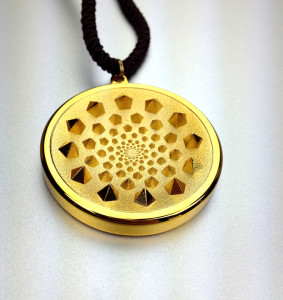Peer-Reviewed, Published Scientific Work of Dr. Patrick Flanagan
This is just some of the published Scientific work of Dr. Patrick Flanagan. Some of the most prestigious peer-reviewed journals in the world have deemed Patrick Flanagan’s work as groundbreaking original work in the areas of life extension and health.
1. Journal of Medicinal Food – Volume 5, Issue Number 1, 2002. Antioxidant Capability and Efficacy of Mega-H-™ Silica Hydride, an Antioxidant Dietary Supplement, by In Vitro Cellular Analysis Using Photosensitization and Fluorescence Detection. (click to download)
2. Free Radical Biology and Medicine – Volume 35, Issue 9, 2003. Antioxidant Capacity of Silica Hydride: a Combinatorial Photosensitization and Fluorescence Detection Assay. (click to download)
3. Journal of Medicinal Food- Volume 6, Issue Number 3, 2003. Evaluation of Hydroxyl Radical-Scavenging Abilities of Silica Hydride, an Antioxidant Compound, by a Fe+2-EDTA Induced 2-Hydroxyterephthalate Fluorometric Analysis. (click to download)
4. International Journal of Hydrogen Energy – Volume 28, Issue 11, 2003. Synthesis of a Novel Anionic Hydride Organosiloxane Presenting Biochemical Properties. (click to download)
5. International Journal of Hydrogen Energy – Volume 29, Issue 5, 2004. Non-Toxic Hydride Energy Source for Biochemical and Industrial Venues: ORP and NAD+ reduction analyses. (click to download)
6. Journal of Medicinal Food- Volume 7, Issue Number 1, 2004. Differential Metabolic Effects on Mitochondria by Silica Hydride Using Capillary Electrophoresis. (click to download)
7. Crystal Energy: Quantitative Analysis of Membrane Diffusion Kinetics, 2005 (click to download)
8. Magnesium Activated Hydrogen Ions and Biological Activity: Empirical Analyses and Clinical Significance. (click to download)
SCIENTIFIC COMMUNITY EMBRACES DR. G. PATRICK FLANAGAN
Many publications have recently embraced Dr. Flanagan’s research. When Dr. Flanagan first began revealing his discoveries, the scientific community did not immediately recognize the significance of his work. Now, 25 years later, not only has much of the medical and scientific community accepted Dr. Flanagan’s work, but also accepted it and celebrated its ground-breaking significance. There are dozens of studies about the health benefits of Silica Hydride, the active ingredient in MegaH and MegaHydrate.
The Antioxidant Capability of Silica Hydride was recently published in the Journal for Medicinal Food (JMF). JMF is considered one of most prestigious medical journals pertaining to human nutrition. Upon receiving Dr. Flanagan’s ground-breaking research, the JMF did not wait the standard 12 months to publish his work. Dr. Flanagan’s research was considered so important that it was given the highest publication priority and published in the very next issue.
ADDITIONAL SCIENTIFIC STUDIES
The references below are a condensed bibliography of studies related to Silica Hydride and Microcluster research.
Brooks GA, Brown MA, Butz CE, Sicurello JP, Dubouchaud H. Cardiac and skeletal muscle mitochondria have a monocarboxylate transporter MCT1. Journal of Applied Physiology 87(5): 1713-1718, 1999.
Carlisle EM. A silicon requirement for normal skull formation in chicks. J Nutr 1980,110;352-9. Carlisle EM. In vivo requirement for silicon in articular cartilage and connective tissue formation in the chick. J Nutr 1976, 106;4:478-84.
Castleman AW. Invited Article. The Journal of Physical Chemistry 1996, Centennial Issue, 100: 12911-12944.
Degani Y, Willner I. Photoinduced hydrogen evolution by an electron acceptor. The functions of SiO2 colloid in controlling the electron-transfer process. J. Am. Chem. Soc. 105: 6228-6233,1983.
Dove PM, Rimstidt JD. Silica-water interactions. In Heany PJ, Prewkt CT, Gibbs GV, (eds): Silica, Physical Behavior, Geochemistry, and Materials Application. Reviews in Mineralogy 29:259-301,1994.
Flanagan P, Purdy Lloyd K. A silicate mineral supplement, Microhydrin®, traps reduced hydrogen providing in vitro biological antioxidant properties. Proceedings National Hydrogen Association 1999,10;595-610.
Gascoyne PRC, Pethic R, Szent Gyorgyi A. Water structure-dependent charge transport in proteins. Proc Nad Acad Sci USA 1981,78; 1:261-265.
Gross ML, Aerni RJ. The unusual loss of hydrogen from ionized 1,5- Hexadiyne. J Am Chem Soc 1973,95;23:7875-7877.
Happe RP, Rosebloom W, Pierik AJ, Albracht SPJ, Bagley KA. Biological activation of hydrogen. Nature 1997,385; 126. Hayashi H. Water the chemistry of life, part IV Explore 6, 1995: 28-31.
Hoffer EC, Meador CK, Simpson DC. Correlation of whole body impedance with total body water volume. J App Phys 1969;27:531.
Hopkins FG, Morgan EJ. Biochem J 1948, 42; 23-27. Hopkins FG. Biochem J 1925, 19;787.
Hopps HC. Geochemical environment related to health and disease. Geological Society of America Special Paper 155:1-9,1975.
Jaqmin Godda H, Commenges D, Letenneur L, Dartigues JF. Silica and aluminum in drinking water and cognitive impairment in the elderly. Epidemiology 7:281- 285,1996.
Keller WD, Balgord WD, Reesman AL. Dissolved products of artificially pulverized silicate minerals and rocks: part I. Journal of Sedimentary Petrology 33:191- 204,1963.
Keller WD, Feder GL. Chemical analysis of water used in Hunza, Pakistan. In Hemphill D.D. (ed): “Trace Substances in Environmental Health-XIII, Proceedings.” University of Missouri-Columbia: 130-137,1979.
Keller WD, Reesman AL. Glacial milks and their laboratory-simulated counterparts. Geol Soc Am Bull 74:61-76,1963. Keller WD. Argillation and direct bauxitization in terms of concentrations of hydrogen and metal ions at surface of hydrolyzing aluminum silicates.
Bulletin of the American Association of Petroleum Geologists 42:233-245,1958. Keller WD. Drinking Water: A geochemical factor in human health. Geological Society of America Bulletin 89:334-336,1978.
Kleiner SM. Water: An essential but overlooked nutrient- J American Dietetic Association 1999,99;2:200-206.
Klotz IM, Ayers, J, Ho JYQ Horowitz MG, Heiney RE. Interactions of proteins with disulfide compounds: some implications for electron transport in proteins. J Am Chem Soc 1958,80;2132-2141.
Klotz IM. Protein hydration and behavior. Many aspects of protein behavior can be interpreted in terms of frozen water of hydration. Science 1958,10;815-821.
Langmuir, Irving. Flames of Atomic Hydrogen. Industrial and Engineering Chemistry 1927, June,19:8; 607-674. Leaf A. Getting Old. Scientific American 229:44-52, 1973.
Leninger AL, Nelson DL, Cox MM, (eds.): Principles of Bioenecgetics. In”Principles of Biochemistry” 2nd ed. New York, Worth Publishers, 1993.
Leung K.N. Bacal M. “H- ion density measurement in a tandem multicusp discharge.” Rev Sci Instrum 1984, 55; 3; 338-341.
Mackor EL, van der Waals J.H. The statistics of the adsorption of rod-shaped molecules in connection with the stability of certain colloidal dispersions, j Colloid and Interface Science 1952,6;535-550.
Marlow, Bruce. Privately funded research monograph entitled: Electrophoretic Fingerprinting of Silica Concrete Treatment Solution, 1993. MaughTH. Soviet science: A wonder water from Kazakhstan. Science 1978, 202; 414.
Meusinger J, Corma A. Influences of Zeolite composition and structure on hydrogen transfer reactions from hydrocarbons and from hydrogen. Journal of Catalysis 1996,159;2:353-360.
Morell, Franz. An Official Transcript of the three hour lecture and slide presentation by Dr. Franz Morel of West Germany regarding “The Bio-Electronic Method of Professor Vincent”, as given at the O.I.C.S. Alumni Associations German Electro-Acupuncture Week in July, 1982 at El Rancho Inn, Millbrae, California, U.S A .
Mukherjee JN, Chatterjee B, Ray A. Liberation of H+, Al+++ and Fe+++ ions from pure clay minerals on repeated salt treatment and desaturations. Colloid Science May 1948, 437-445.








